The Copenhagen interpretation is a collection of views about the meaning of quantum mechanics, principally attributed to Niels Bohr and Werner Heisenberg. It is one of the oldest of numerous proposed interpretations of quantum mechanics, as features of it date to the development of quantum mechanics during 1925–1927, and it remains one of the most commonly taught.
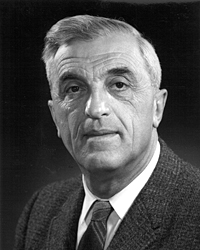
Felix Bloch was a Swiss-American physicist and Nobel physics laureate who worked mainly in the U.S. He and Edward Mills Purcell were awarded the 1952 Nobel Prize for Physics for "their development of new ways and methods for nuclear magnetic precision measurements." In 1954–1955, he served for one year as the first director-general of CERN. Felix Bloch made fundamental theoretical contributions to the understanding of ferromagnetism and electron behavior in crystal lattices. He is also considered one of the developers of nuclear magnetic resonance.
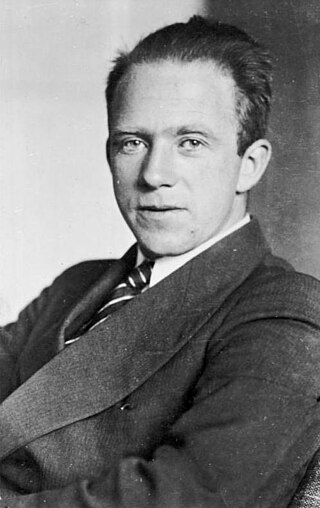
Werner Karl Heisenberg was a German theoretical physicist and one of the main pioneers of the theory of quantum mechanics. He published his work in 1925 in a major breakthrough paper. In the subsequent series of papers with Max Born and Pascual Jordan, during the same year, his matrix formulation of quantum mechanics was substantially elaborated. He is known for the uncertainty principle, which he published in 1927. Heisenberg was awarded the 1932 Nobel Prize in Physics "for the creation of quantum mechanics".
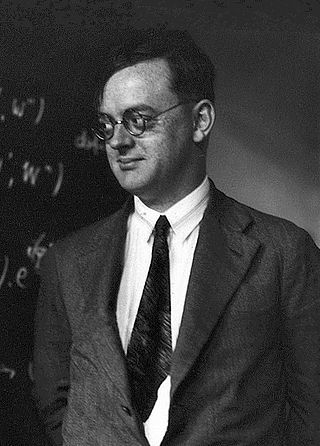
Ernst Pascual Jordan was a German theoretical and mathematical physicist who made significant contributions to quantum mechanics and quantum field theory. He contributed much to the mathematical form of matrix mechanics, and developed canonical anticommutation relations for fermions. He introduced Jordan algebras in an effort to formalize quantum field theory; the algebras have since found numerous applications within mathematics.

The names Uranverein or Uranprojekt came to be applied in Nazi Germany to the undertakings of research in nuclear technology, including nuclear weapons and nuclear reactors, before and during World War II. The first effort started in April 1939, just months after the discovery of nuclear fission in Berlin in December 1938, but ended only few months later, shortly ahead of the September 1939 German invasion of Poland, for which many notable German physicists were drafted into the Wehrmacht. A second effort under the administrative purview of the Wehrmacht's Heereswaffenamt began on September 1, 1939, the day of the invasion of Poland. The program eventually expanded into three main efforts: Uranmaschine, production of uranium and heavy water, and uranium isotope separation. Eventually, the German military assessed that nuclear fission would not contribute significantly to the war, and in January 1942 the Heereswaffenamt turned the program over to the Reich Research Council while still continuing to fund the activity.

Mário Schenberg was a Brazilian electrical engineer, physicist, art critic and writer.

Ugo Fano was an Italian American physicist, notable for contributions to theoretical physics.
Hassium (108Hs) is a synthetic element, and thus a standard atomic weight cannot be given. Like all synthetic elements, it has no stable isotopes. The first isotope to be synthesized was 265Hs in 1984. There are 13 known isotopes from 263Hs to 277Hs and 1–4 isomers. The most stable isotope of hassium cannot be determined based on existing data due to uncertainty that arises from the low number of measurements. The half-lives of 269Hs and 271Hs are about 12 seconds, whereas that of 270Hs is about 7.6 seconds. It is also possible that 277mHs is more stable than these, with its half-life likely being 130±100 seconds, but only one event of decay of this isotope has been registered as of 2016.
Darmstadtium (110Ds) is a synthetic element, and thus a standard atomic weight cannot be given. Like all synthetic elements, it has no stable isotopes. The first isotope to be synthesized was 269Ds in 1994. There are 11 known radioisotopes from 267Ds to 281Ds and 2 or 3 known isomers. The longest-lived isotope is 281Ds with a half-life of 14 seconds.
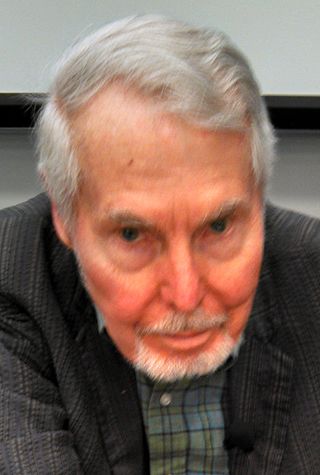
John David Jackson was a Canadian–American physics professor at the University of California, Berkeley and a faculty senior scientist emeritus at Lawrence Berkeley National Laboratory.
The history of string theory spans several decades of intense research including two superstring revolutions. Through the combined efforts of many researchers, string theory has developed into a broad and varied subject with connections to quantum gravity, particle and condensed matter physics, cosmology, and pure mathematics.
Kurt Symanzik was a German physicist working in quantum field theory.
Kurt Gottfried was an Austrian-born American physicist who was professor emeritus of physics at Cornell University. He was known for his work in the areas of quantum mechanics and particle physics and was also a co-founder with Henry Way Kendall of the Union of Concerned Scientists. He wrote extensively in the areas of physics and arms control.
There is a diversity of views that propose interpretations of quantum mechanics. They vary in how many physicists accept or reject them. An interpretation of quantum mechanics is a conceptual scheme that proposes to relate the mathematical formalism to the physical phenomena of interest. The present article is about those interpretations which, independently of their intrinsic value, remain today less known, or are simply less debated by the scientific community, for different reasons.
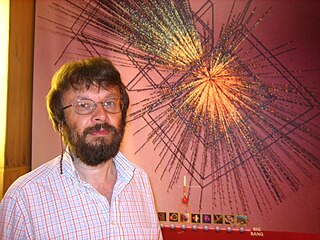
Marek Gaździcki is a Polish high-energy nuclear physicist, and the initiator and spokesperson of the NA61/SHINE experiment at the CERN Super Proton Synchrotron (SPS).

The Physical Principles of the Quantum Theory(German: Physikalischen Prinzipien der Quantentheorie publisher: S. Hirzel Verlag, 1930) by Nobel laureate (1932) Werner Heisenberg and subsequently translated by Carl Eckart and Frank C. Hoyt. The book was first published in 1930 by University of Chicago Press. Then in 1949, according to its copyright page, Dover Publications reprinted the "unabridged and unaltered" 1930's version.
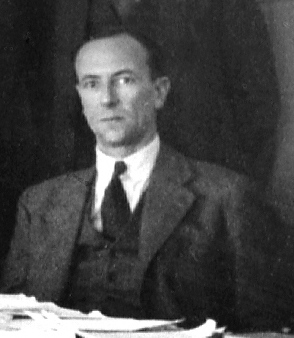
The discovery of the neutron and its properties was central to the extraordinary developments in atomic physics in the first half of the 20th century. Early in the century, Ernest Rutherford developed a crude model of the atom, based on the gold foil experiment of Hans Geiger and Ernest Marsden. In this model, atoms had their mass and positive electric charge concentrated in a very small nucleus. By 1920, isotopes of chemical elements had been discovered, the atomic masses had been determined to be (approximately) integer multiples of the mass of the hydrogen atom, and the atomic number had been identified as the charge on the nucleus. Throughout the 1920s, the nucleus was viewed as composed of combinations of protons and electrons, the two elementary particles known at the time, but that model presented several experimental and theoretical contradictions.
Stanley Sweet Hanna was an American physicist.
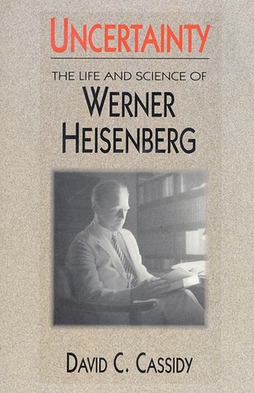
Uncertainty: the Life and Science of Werner Heisenberg is a biography by David C. Cassidy documenting the life and science of Werner Heisenberg, one of the founders of quantum mechanics. The book was published in 1992 by W. H. Freeman and Company while an updated and popularized version was published in 2009 under the title Beyond Uncertainty: Heisenberg, Quantum Physics, and The Bomb. The book is named after the quantum mechanics concept known as Heisenberg's uncertainty principle. It has been reviewed many times and was generally well received.

Beyond Uncertainty: Heisenberg, Quantum Physics, and the Bomb is a biography of Werner Heisenberg by David C. Cassidy. Published by Bellevue Literary Press in 2009, the book is a sequel to Cassidy's 1992 biography, Uncertainty: the Life and Science of Werner Heisenberg and serves as an updated and popularized version of the work. The release of new material after the 1992 publication of the first book rekindled controversy surrounding Heisenberg and his role in the German nuclear weapons program, resulting in the need for an updated version of the biography. The book's name is adapted from the first biography, whose title is taken from Heisenberg's uncertainty principle.












